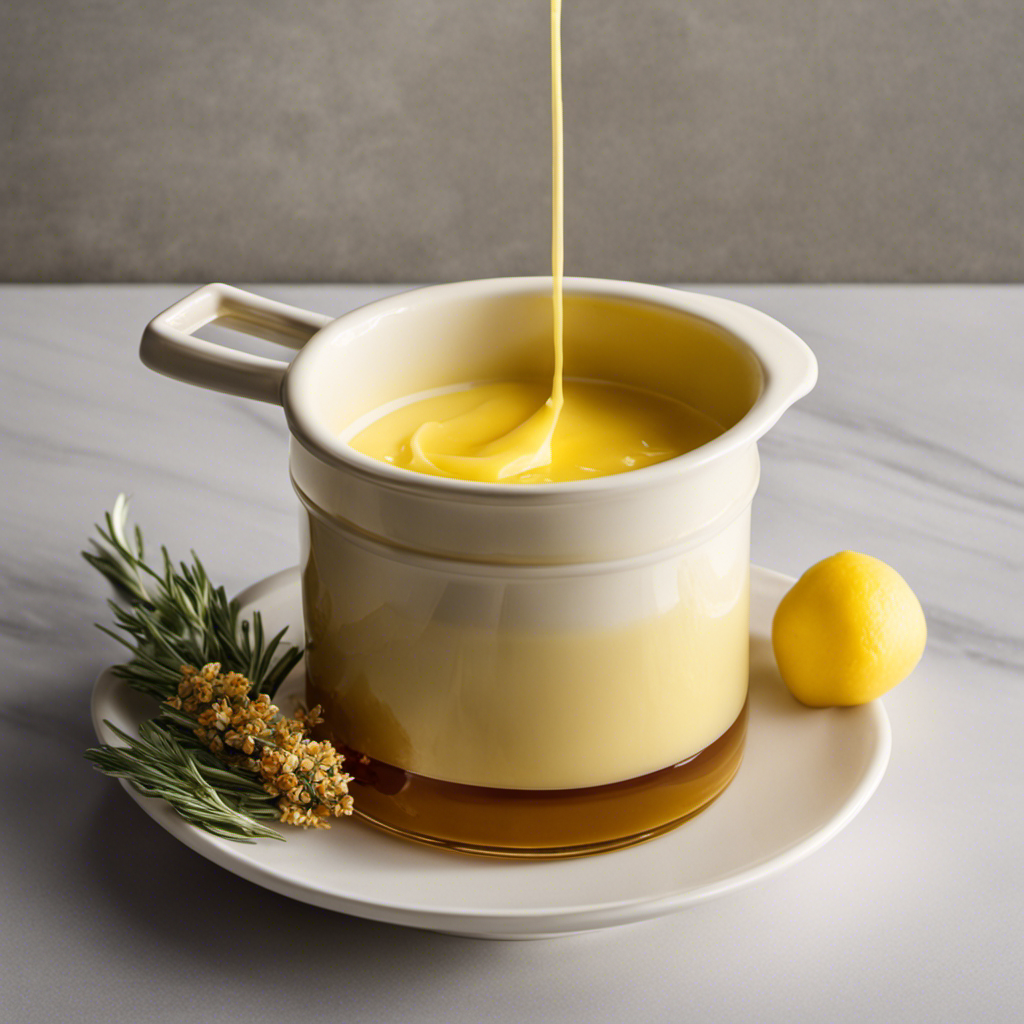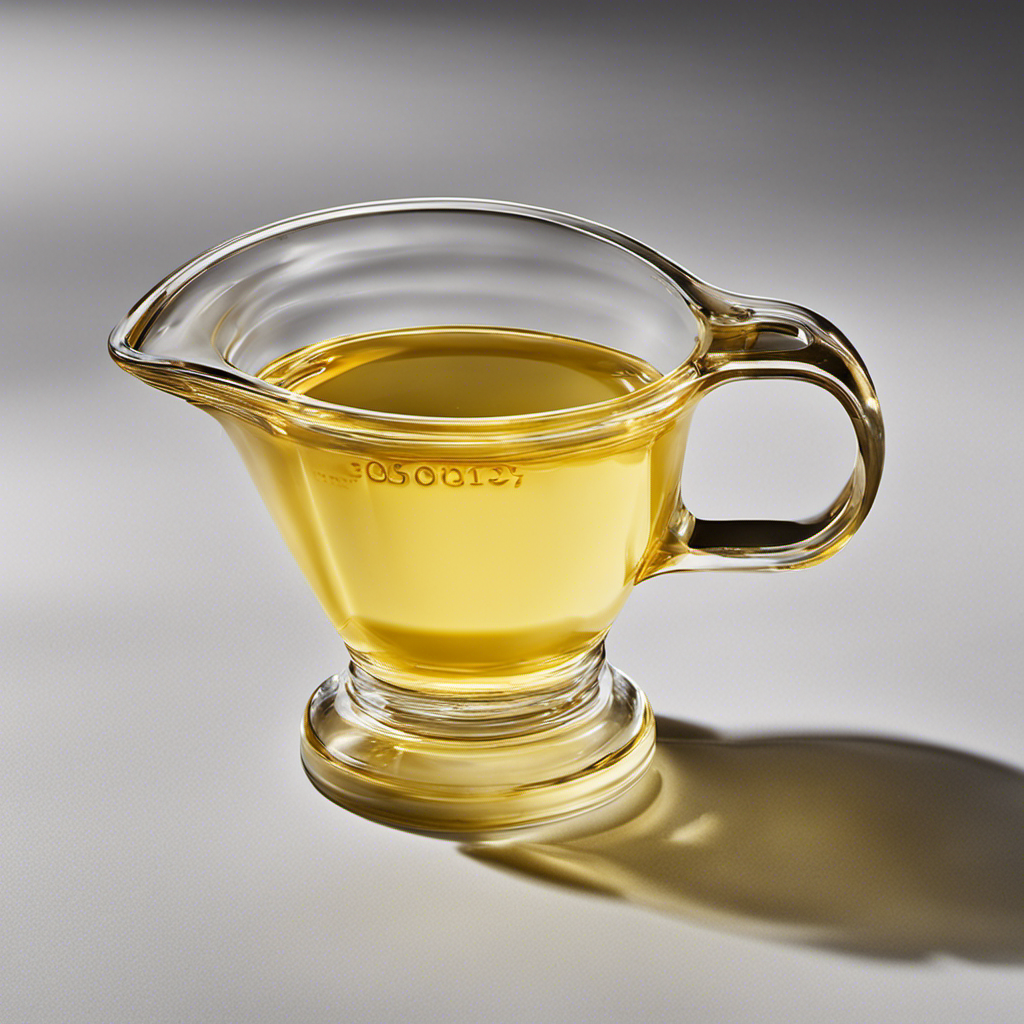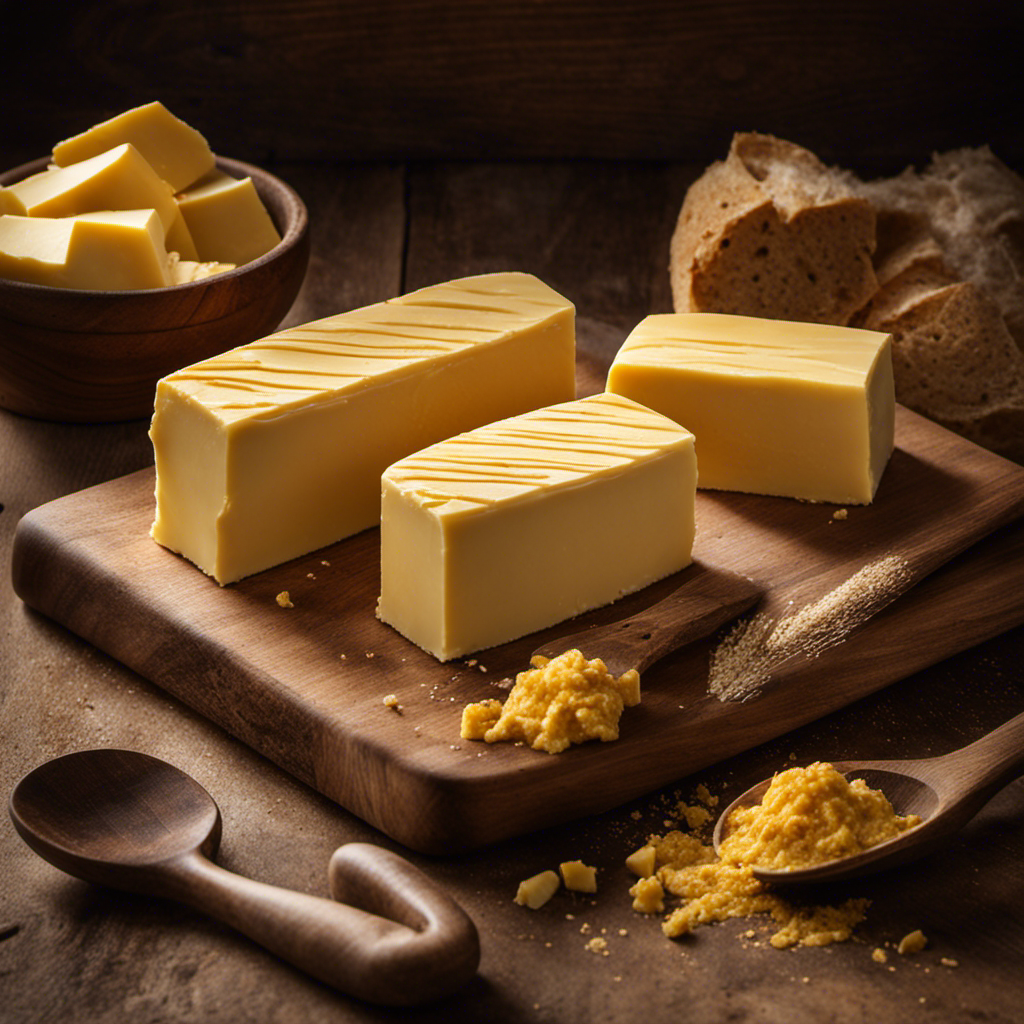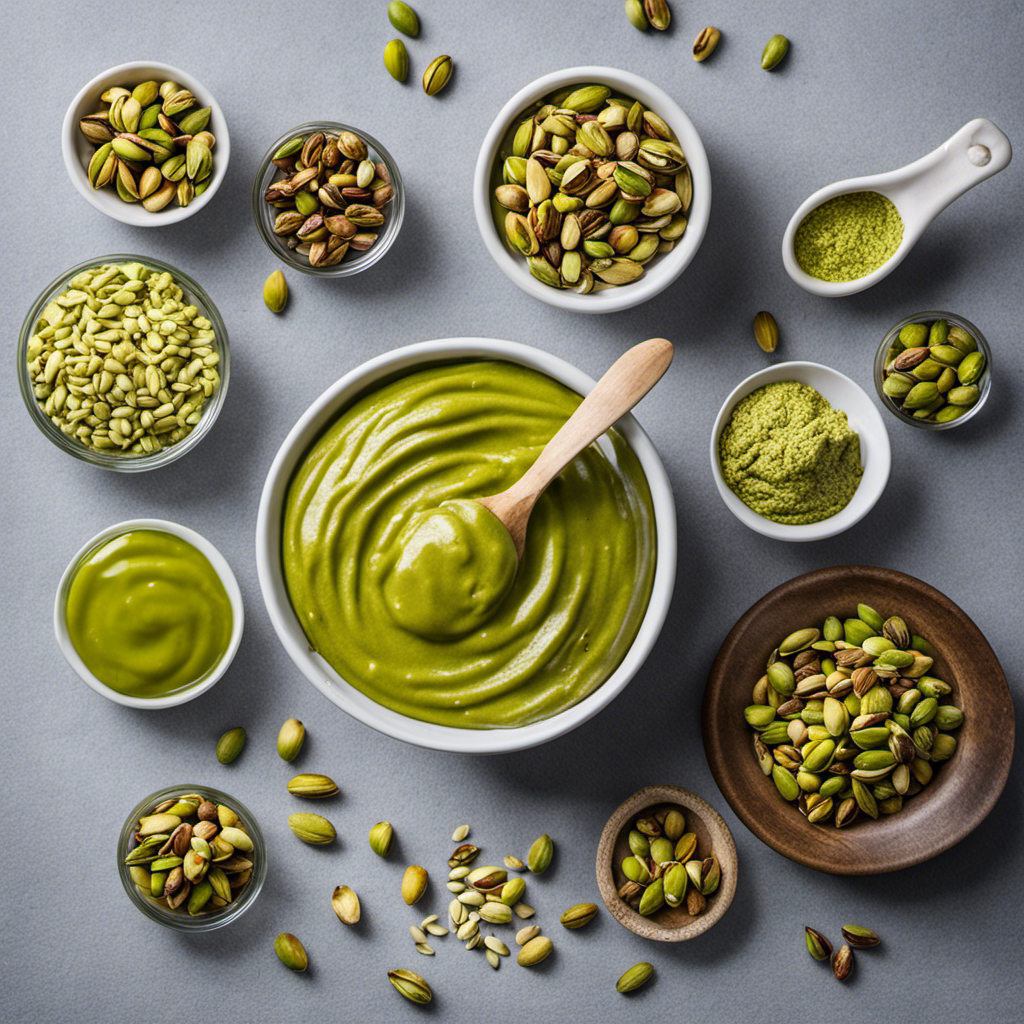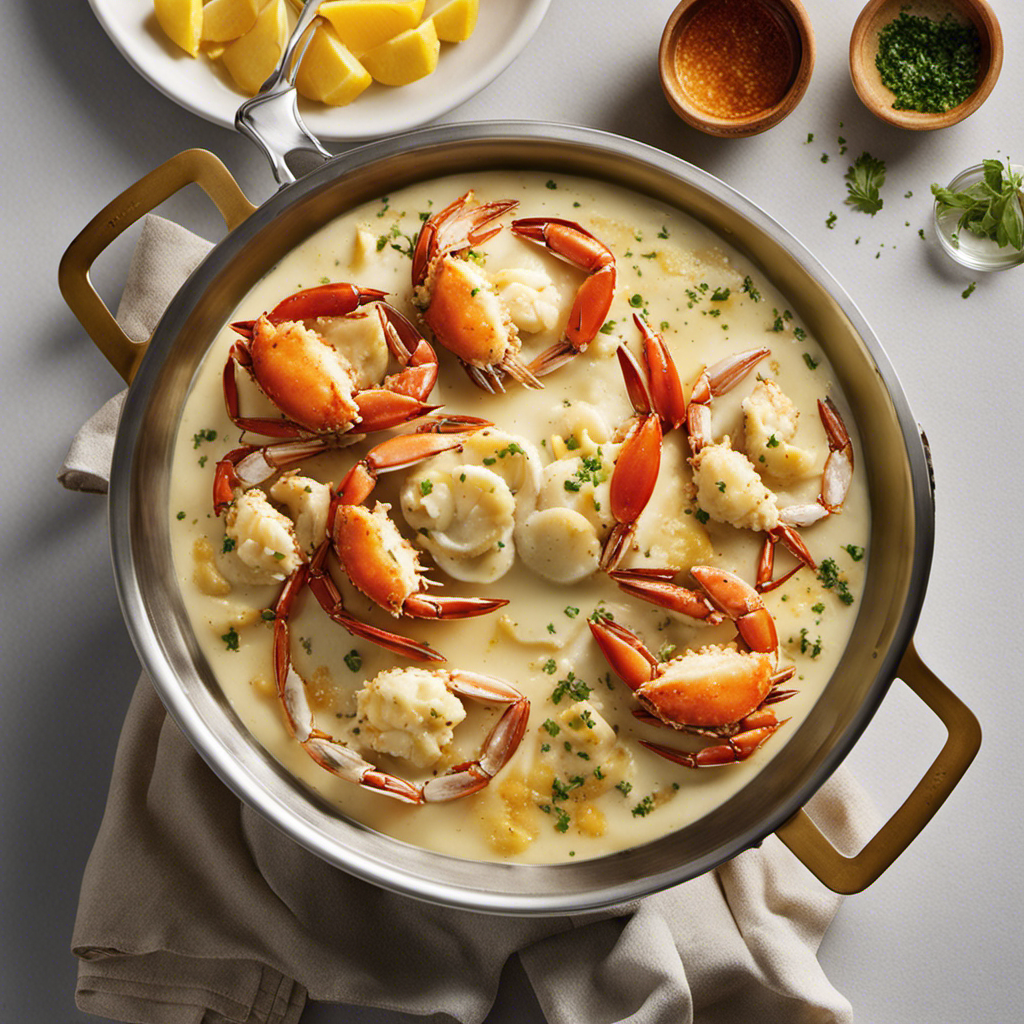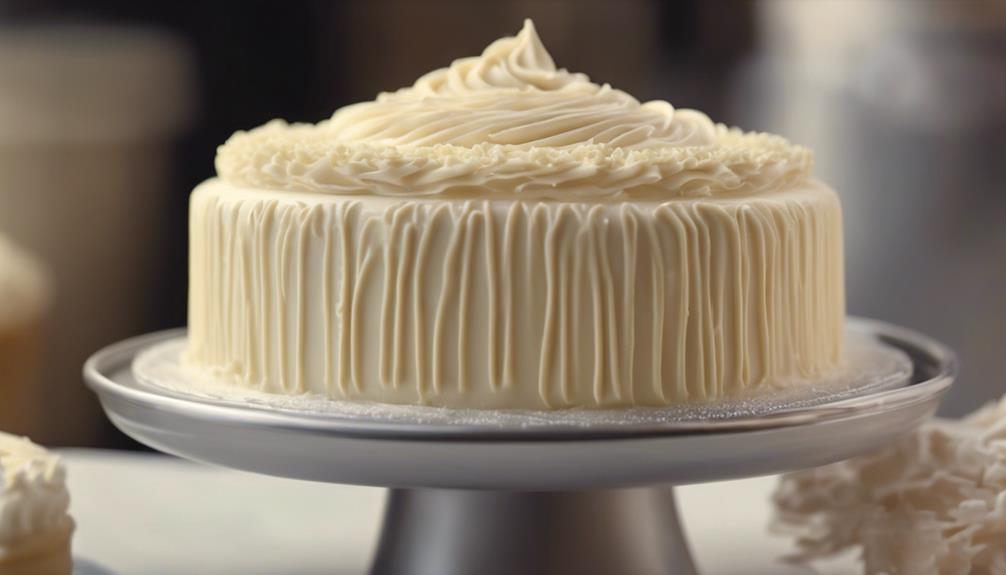I have always had a strong passion for baking, and one thing that often presents a challenge for me is converting measurements. Recently, I found myself struggling to determine how many ounces are in a cup of butter. It can get quite confusing, especially when trying to follow a recipe.
That’s why I decided to dive into the topic and create this informative article. So, if you’ve ever found yourself in the same buttery predicament, keep reading to discover the answer and some helpful tips along the way.
Key Takeaways
- 1 cup of butter is equal to 8 ounces or 16 tablespoons.
- Accurate butter measurement is crucial for baking success.
- One tablespoon of butter is equal to 0.5 ounces.
- Different forms of butter may have different weight measurements.
Understanding the Measurement: Cup Vs. Ounce
There’s a difference between a cup and an ounce when it comes to measuring butter for cooking. Understanding butter ratios is crucial for achieving the right consistency and flavor in recipes.
In baking and cooking, butter is often measured in cups or ounces, depending on the recipe’s requirements. A cup of butter is equivalent to 8 ounces or 16 tablespoons. This means that if a recipe calls for 1 cup of butter, you’ll need 8 ounces or 16 tablespoons of it.
However, it’s essential to note that butter can vary in density, so it’s always best to measure it using a kitchen scale for accurate results. Knowing the difference between a cup and an ounce will help you confidently follow recipes and create delicious dishes.
Converting Butter Measurements: Cups to Ounces
When it comes to baking, accurate butter measurement is crucial for achieving the desired results. Converting cups to ounces is a useful skill to have in the kitchen, as it allows for more precise measurements and consistency in recipes.
In this discussion, I will delve into the techniques and calculations involved in converting butter measurements from cups to ounces, providing you with the knowledge needed to confidently navigate any recipe.
Accurate Butter Measurement
To accurately measure butter, it’s important to know that there are 8 ounces in a cup. Precise butter measurements are crucial in baking and cooking because they directly impact the texture, flavor, and overall success of the recipe.
Here are three common challenges in measuring butter accurately:
-
Guesswork: Eyeballing the amount of butter can lead to inconsistencies in recipes, resulting in dry or greasy dishes.
-
Softened vs. melted butter: Recipes often specify softened or melted butter, and accurately measuring the correct form is essential for achieving the desired outcome.
-
Conversion confusion: Converting butter measurements from cups to ounces or grams can be confusing, especially when recipes provide measurements in different units.
Converting Cups to Ounces
If you’re unsure about converting measurements, it can be helpful to use a kitchen scale to accurately measure ingredients.
When it comes to converting cups to milliliters, the conversion is straightforward. One cup is equal to 236.59 milliliters.
However, when it comes to converting butter measurements from tablespoons to ounces, it can be a bit more complicated. One tablespoon of butter is equivalent to 0.5 ounces. So, if you have a recipe that calls for 8 tablespoons of butter, you would need 4 ounces.
It’s important to note that butter measurements can vary depending on the brand and its density.
Now that we know how to convert tablespoons to ounces, let’s move on to the standard measurement: 1 cup of butter in ounces.
The Standard Measurement: 1 Cup of Butter in Ounces
You can easily convert 1 cup of butter into ounces. Here are three key points to consider:
-
Stick Butter: One stick of butter is equal to 1/2 cup or 4 ounces. So, 1 cup of butter would be equivalent to 2 sticks or 8 ounces.
-
Margarine or Spread: If you’re using margarine or a spread instead of butter, be aware that the weight may vary. Check the packaging for the weight equivalent of 1 cup.
-
European Butter: European butter typically has a higher fat content, resulting in a denser and richer product. When measuring 1 cup of European butter, it may weigh slightly more than regular butter due to the higher fat content.
Alternative Measurements: Butter in Pounds and Grams
When using alternative measurements, it’s important to know the weight of butter in pounds and grams. This knowledge can be useful for various baking recipes or when you don’t have a measuring cup on hand. To help you convert between pounds and cups, and grams and ounces, here’s a handy table:
| Measurement | Pounds to Cups Conversion | Grams to Ounces Conversion |
|---|---|---|
| 1 lb | 4 cups | 16 oz |
| 0.5 lb | 2 cups | 8 oz |
| 0.25 lb | 1 cup | 4 oz |
Baking Measurements: Butter in Ounces for Recipes
To accurately measure butter for recipes, it’s important to know the weight in ounces. Here are three reasons why understanding butter measurement equivalents and converting butter measurements to tablespoons is crucial for baking:
-
Precision: Baking is a science, and precise measurements are vital for successful results. Converting butter measurements to ounces allows for accurate ingredient proportions.
-
Consistency: Using the correct amount of butter ensures consistent texture and flavor in baked goods. By converting measurements to tablespoons, you can easily adjust the quantity of butter according to your recipe’s requirements.
-
Recipe Adaptation: Converting butter measurements allows you to adapt recipes to your needs. If you want to reduce the fat content, knowing the equivalent tablespoons of butter can help you make the necessary adjustments without compromising the recipe’s integrity.
Tips for Measuring Butter Accurately in Cups or Ounces
When it comes to baking, accurately measuring butter is crucial for achieving the desired results. In this discussion, I will cover three key points:
- The conversion ratio for butter.
- Common measuring mistakes to avoid.
- Alternative butter measurements.
Understanding these aspects will help you confidently measure butter in cups or ounces for your recipes, ensuring the perfect outcome every time.
Conversion Ratio for Butter
The conversion ratio for butter is 1 cup equals 8 ounces. When it comes to measuring butter accurately, it’s important to know the correct conversion ratio. Here are some conversion tips to keep in mind:
-
Be precise: Use a measuring cup specifically designed for liquids, as it will provide the most accurate measurement for butter.
-
Informative measurement: When substituting butter with a different ingredient, make sure to convert the measurement accurately to maintain the desired texture and taste of your recipe.
-
Technical knowledge: Remember that butter can vary in density, so it’s essential to measure it by weight rather than volume for precise results.
Following these conversion tips will ensure that your recipes turn out just right, whether you’re measuring butter or substituting it with another ingredient.
Common Measuring Mistakes
Remember, it’s easy to make common measuring mistakes, so be sure to double-check your measurements for accurate results.
When it comes to measuring butter accurately, there are a few common conversion mistakes that people often make. One of the most common mistakes is assuming that one cup of butter is equal to one cup of its liquid volume. However, butter is a solid and its density is higher than that of water, so one cup of butter actually weighs more than one cup of water.
Another mistake is not properly softening the butter before measuring, which can lead to incorrect measurements.
To avoid these mistakes, it’s important to use a kitchen scale for accurate measurements or refer to a reliable conversion chart.
Now, let’s explore some alternative butter measurements.
Alternative Butter Measurements
When it comes to butter, there are times when you may need to use alternative butter substitutes or deal with different butter textures. Here are some things to keep in mind:
-
Margarine: Margarine is a common alternative to butter. It is made from vegetable oils and has a similar texture to butter. However, it may not provide the same flavor as butter.
-
Coconut oil: Coconut oil can be used as a substitute for butter in baking. It adds a subtle coconut flavor and has a creamy texture when solid.
-
Applesauce: In recipes that call for melted butter, you can substitute applesauce for a healthier option. Applesauce adds moisture and a slight sweetness to baked goods.
Transitioning into the next section, let’s delve into some frequently asked questions about butter measurements.
Frequently Asked Questions About Butter Measurements
One common question people have is: How many ounces are in a cup of butter? When it comes to butter measurement conversion, it is important to understand that butter is typically sold in sticks or blocks. Each stick of butter usually weighs 4 ounces or 113 grams. Therefore, a cup of butter, which is equivalent to 2 sticks or 8 ounces, would weigh approximately 226 grams.
To measure butter accurately, it is best to use a kitchen scale, as it provides the most precise measurement. If a scale is not available, using the measurement marks on the butter wrapper can be helpful. Additionally, cutting the butter into tablespoon-sized portions can also make it easier to measure.
Overall, using the proper measuring methods ensures accurate and consistent results when working with butter.
Frequently Asked Questions
Can I Use Margarine Instead of Butter in Recipes That Call for Cups or Ounces?
Yes, you can substitute margarine for butter in recipes that call for cups or ounces. However, keep in mind that margarine may alter the taste and texture. To find alternative measurements, you can use online conversion tools or refer to recipe books.
How Many Tablespoons Are in an Ounce of Butter?
To measure butter accurately, it’s important to know how many tablespoons are in an ounce. Butter and margarine can be used interchangeably in recipes, but the conversion may vary.
Can I Substitute Oil for Butter in Recipes That Call for Cups or Ounces?
Yes, you can substitute oil for butter in recipes that call for cups or ounces. However, keep in mind that this substitution may impact the taste and texture of the final dish.
How Do I Measure Butter Accurately if I Don’t Have Measuring Cups or a Kitchen Scale?
If you don’t have measuring tools, you can still measure butter accurately. One stick of butter is usually 4 ounces or 1/2 cup. So you can use that as a reference when converting butter measurements.
Is It Possible to Freeze Butter for Long-Term Storage?
Yes, it is possible to freeze butter for long-term storage. However, there are some drawbacks, like changes in texture. Alternatives include canning, clarifying, or using vacuum-sealed bags for extended butter storage.
Conclusion
In conclusion, understanding the measurement of butter can be as delicate as a master chef creating a perfectly balanced dish.
Just like a skilled artist, knowing the conversion from cups to ounces is essential in achieving culinary perfection.
Whether you prefer the standard measurement of 1 cup of butter in ounces or opt for alternative measurements in pounds and grams, accuracy is key.
So, remember to measure your butter with precision, like a virtuoso playing a symphony, for the most delectable results in your baking endeavors.
